A. Title
Transcending Space: Wing Reflection🦋 – Ting – Prof. Eric Parren
B. Project Description
Inspired by Kosei Komatsu’s Light and Shadow butterflies and “Transcending Space” in TeamLab, I want to create a transcending space of fluttering butterflies. The principle is making use of light and shadow and light effects on different materials. Using the alternative twinkle of two spotlights from two opposite directions, the butterflies’ wings will be reflected on both sides of the butterflies to mimic the dynamic effects of fluttering. Also, by using transparent acrylic sheets covered by paper with different colors and textures, I can explore more possibilities of light reflection on different materials.
(Kosei Komatsu’s butterflies)
(Transcending Space in teamLab)
C. Perspective and Context
In this project, I want explore more about the composition of light and space. I focus on how the light can be seen in reflective space and what effect can be produced by light directing on different materials for more possibilities of light reflection and refraction. “Instead of the work’s being developed from and contingent upon existing material conditions, it was based on and developed by the use of preselected materials and principles.” (Clark, 48) I bought the materials and predicted the effects in my mind and experimented on the limited unpredictability. Also, I believe the transcending space constructed by mirror reflection create interference in people’s mind through disrupting the sight. “Light and Space art does not deal with light and space as media as much as it deals with the participating subject’s perceptual adjustment” (Schuld, 118) I hope my project create the peaceful atmosphere and calm feelings for the participants.
D. Development & Technical Implementation
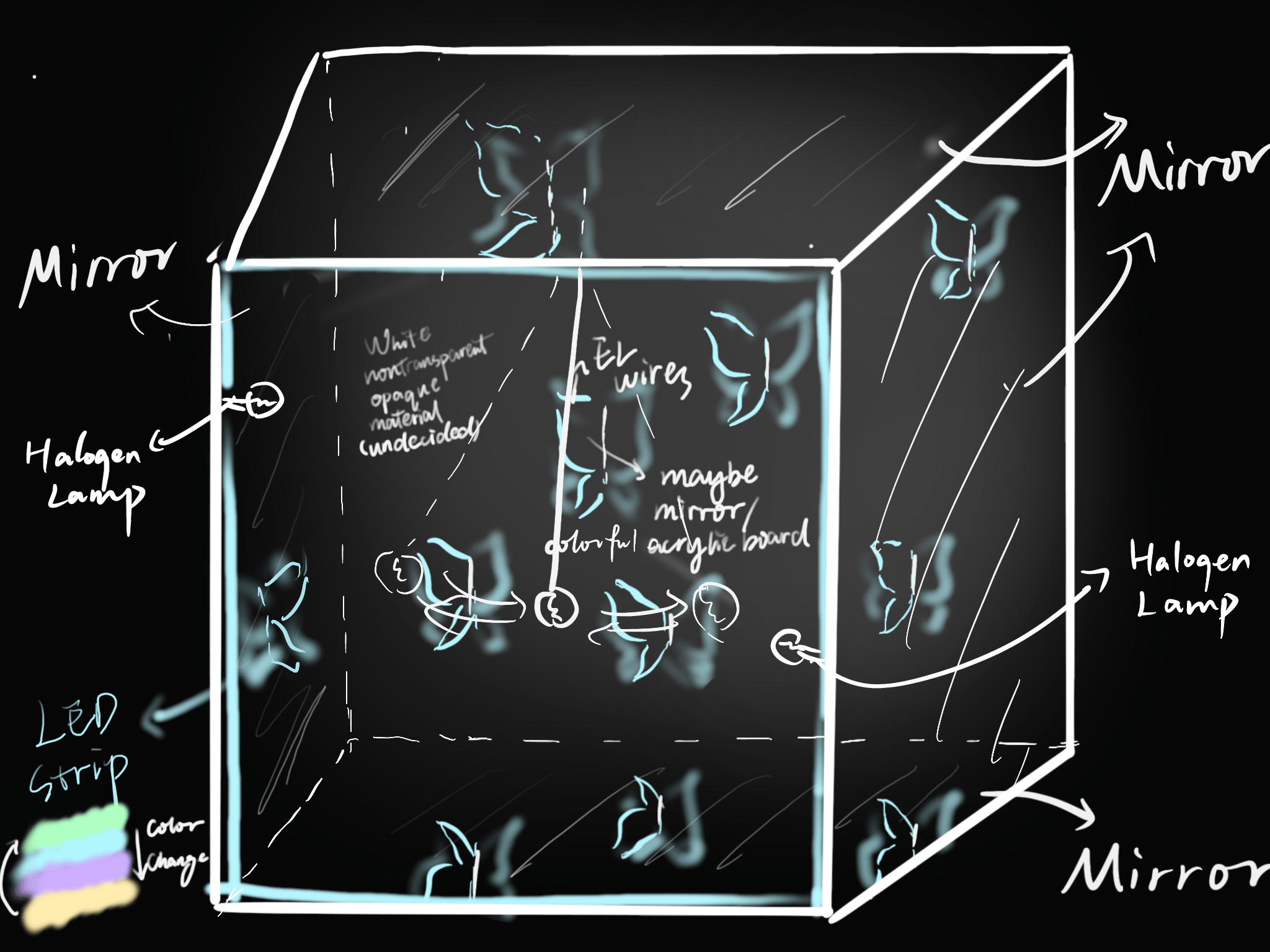
This is the draft sketch of my project.
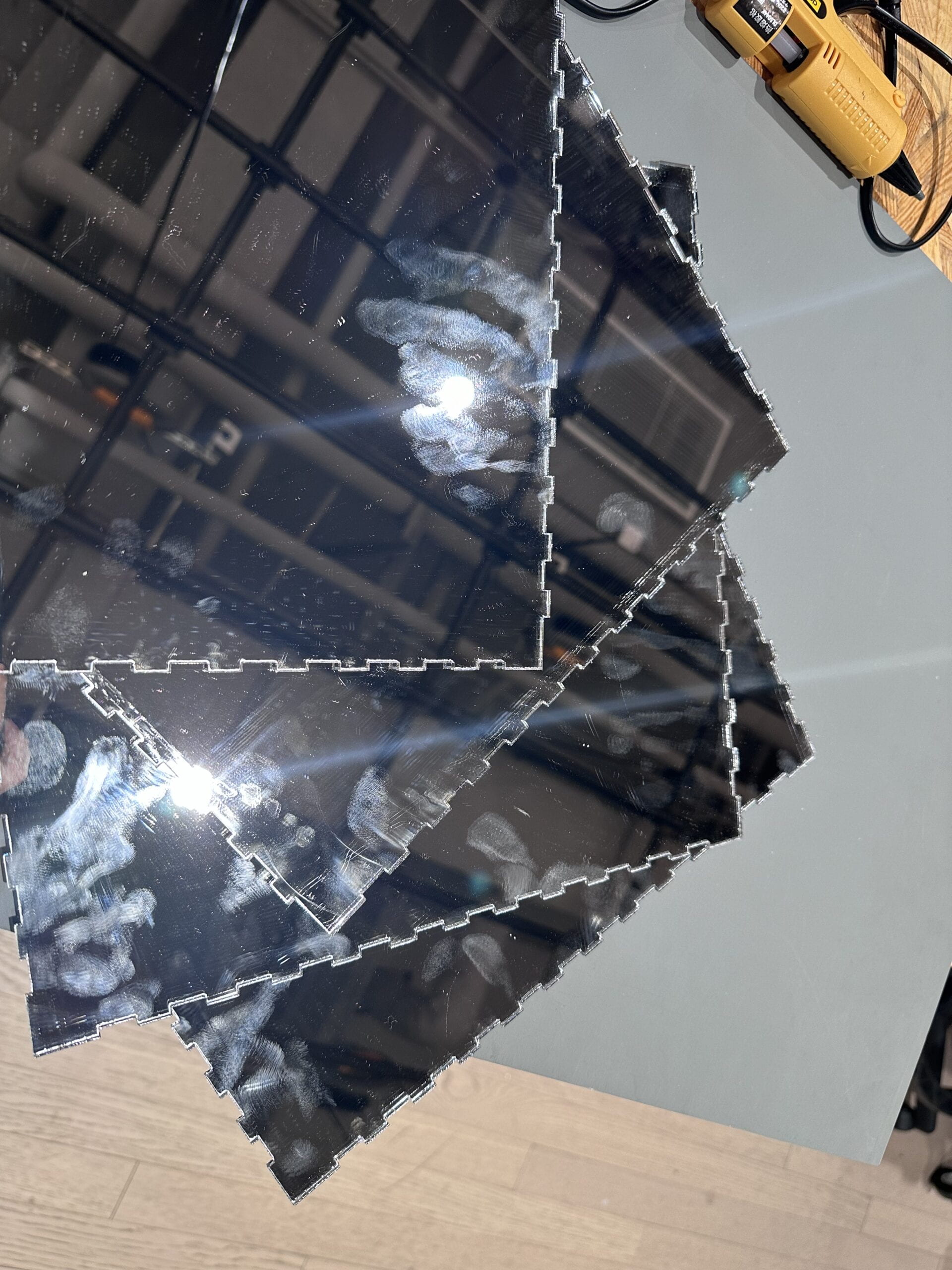
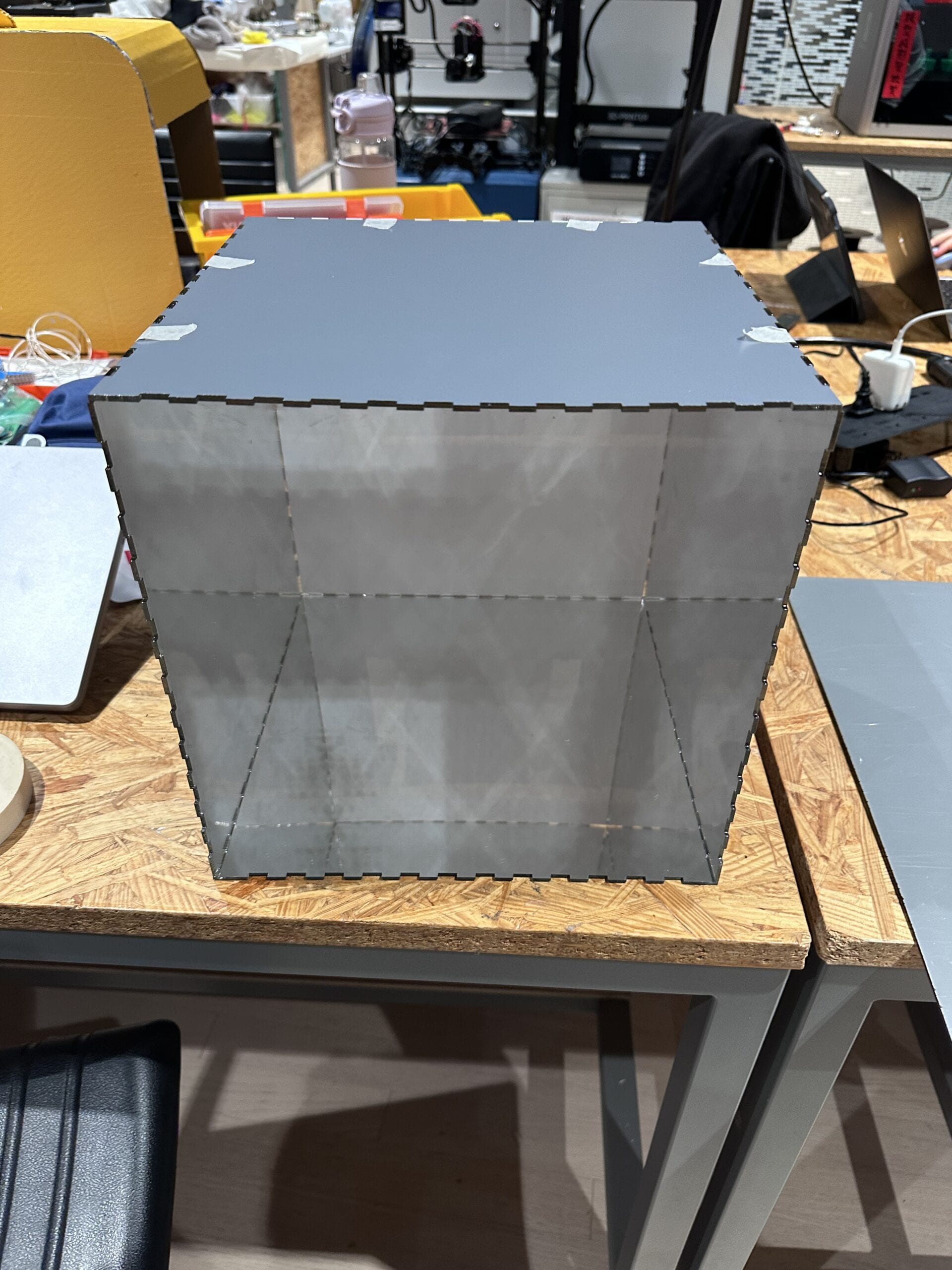
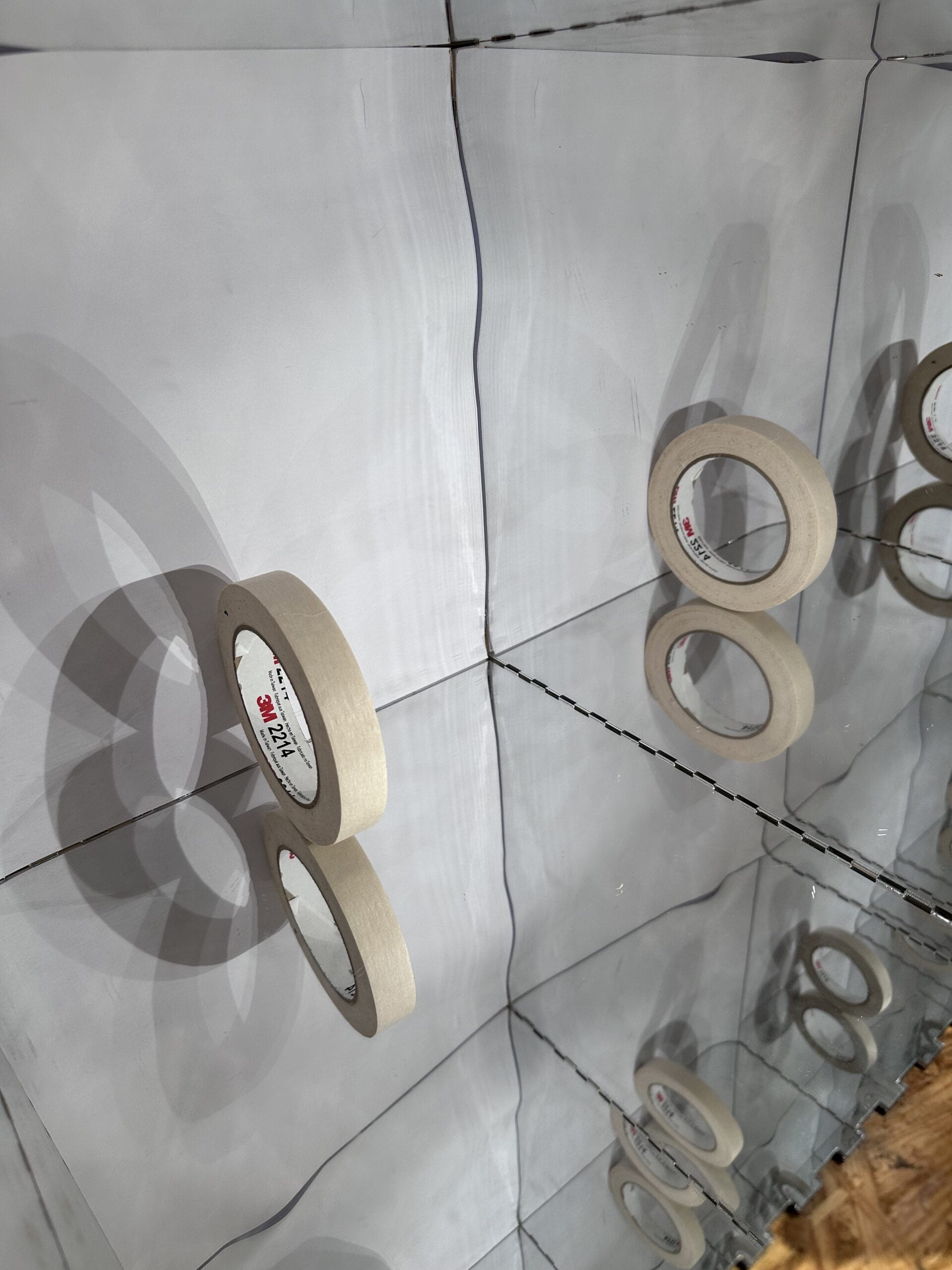
First, I made the mirror box. I put the tape in it to see if it worked as an infinite space and it succeeded.
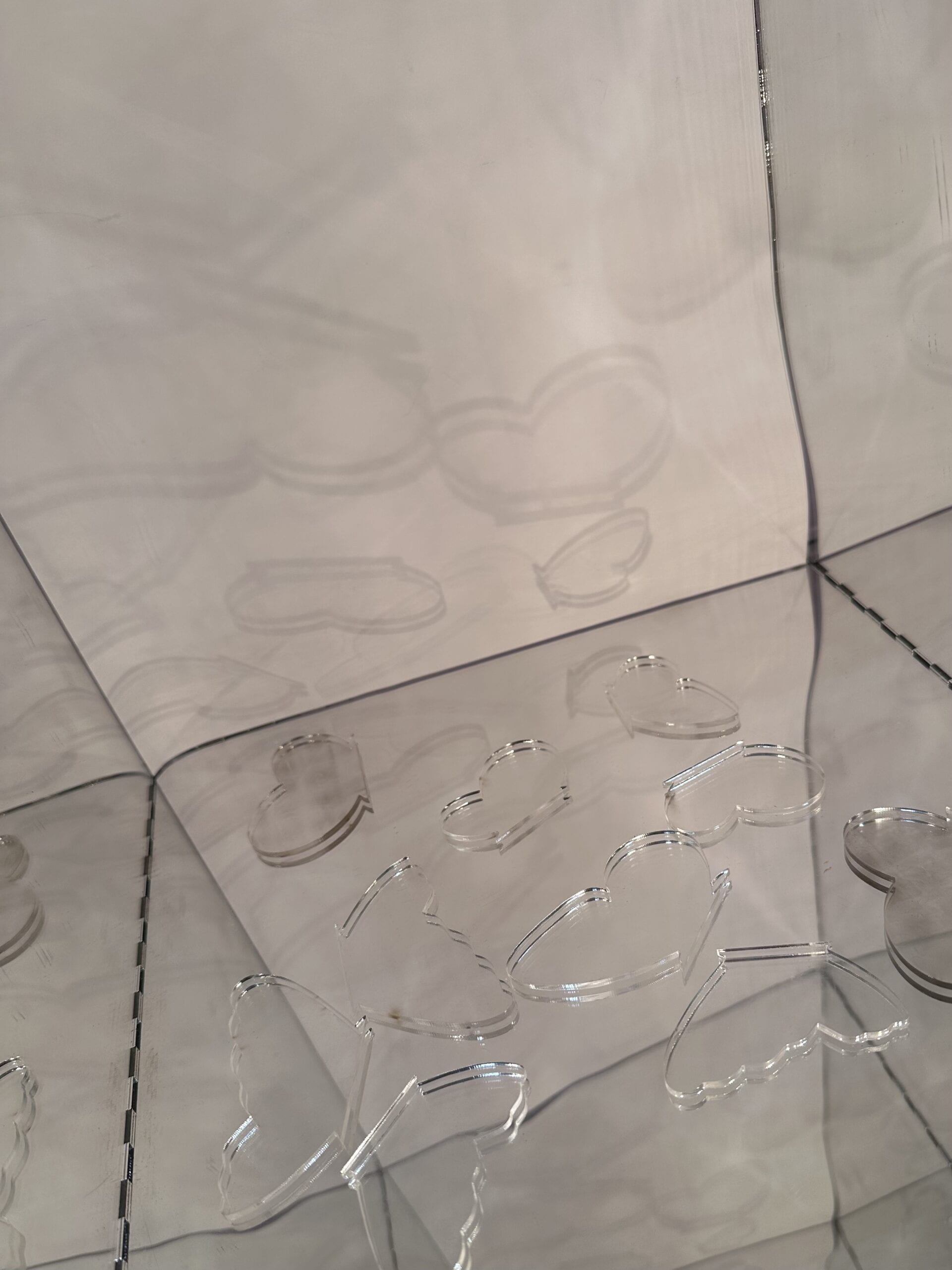
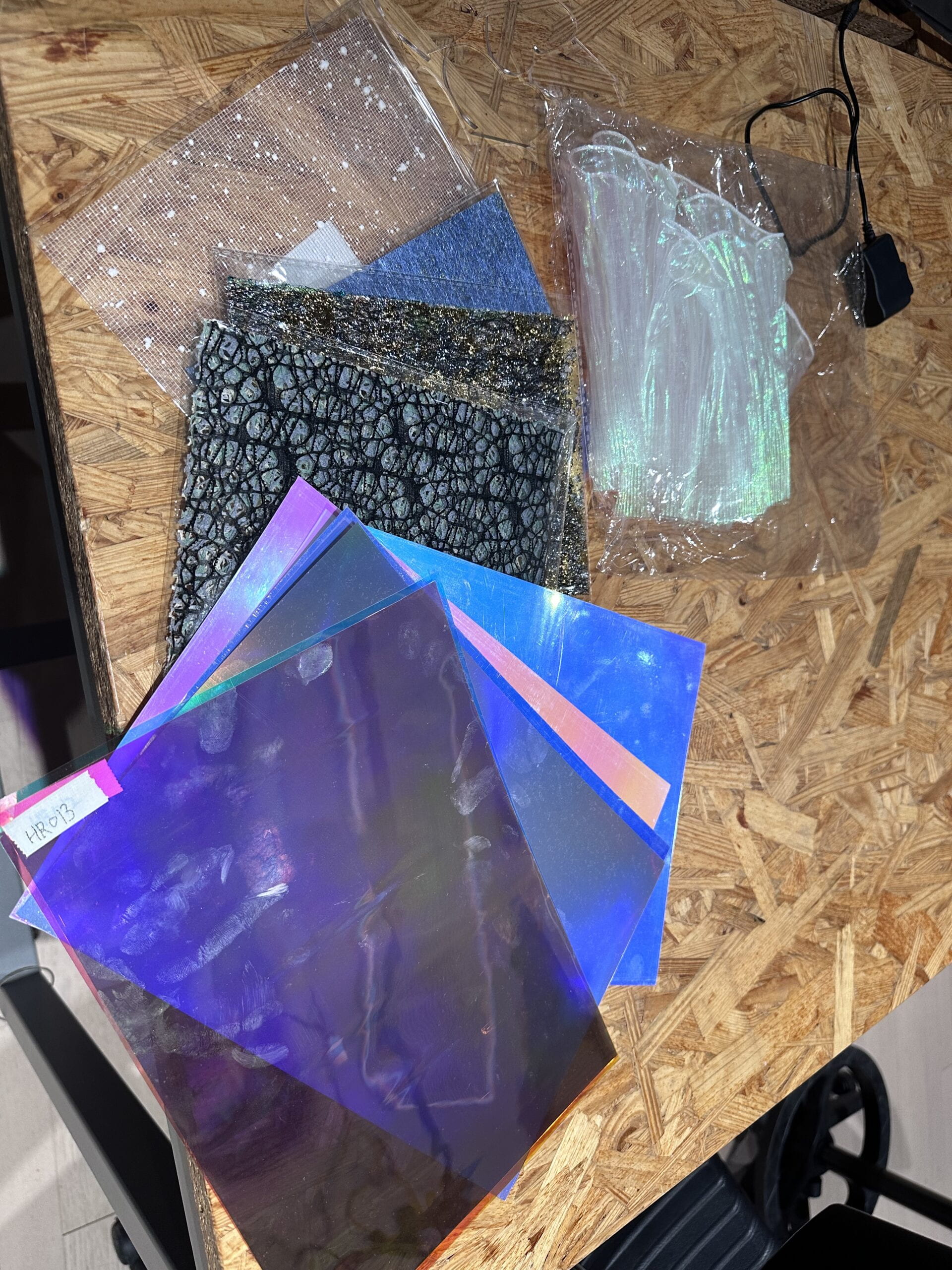
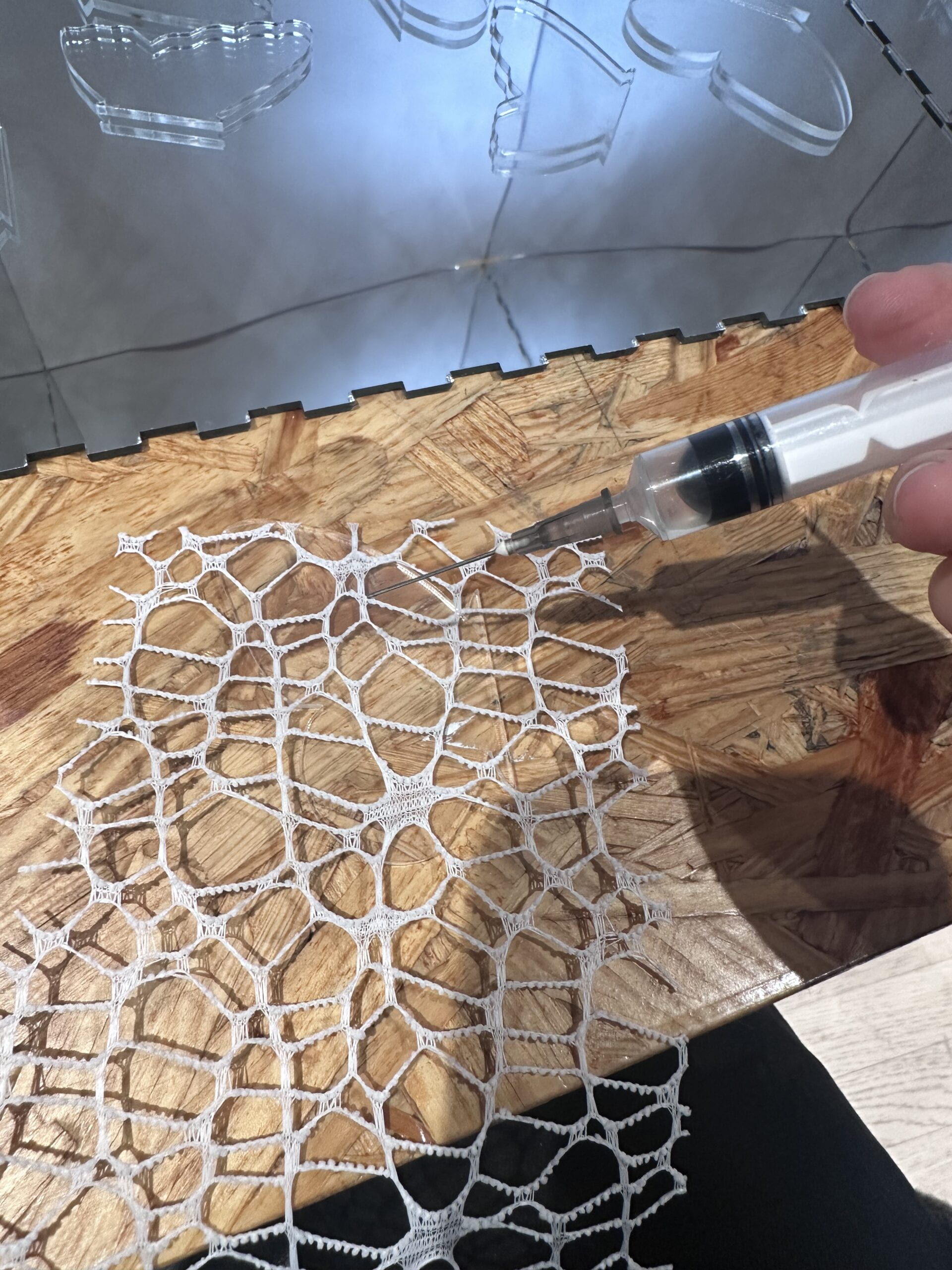
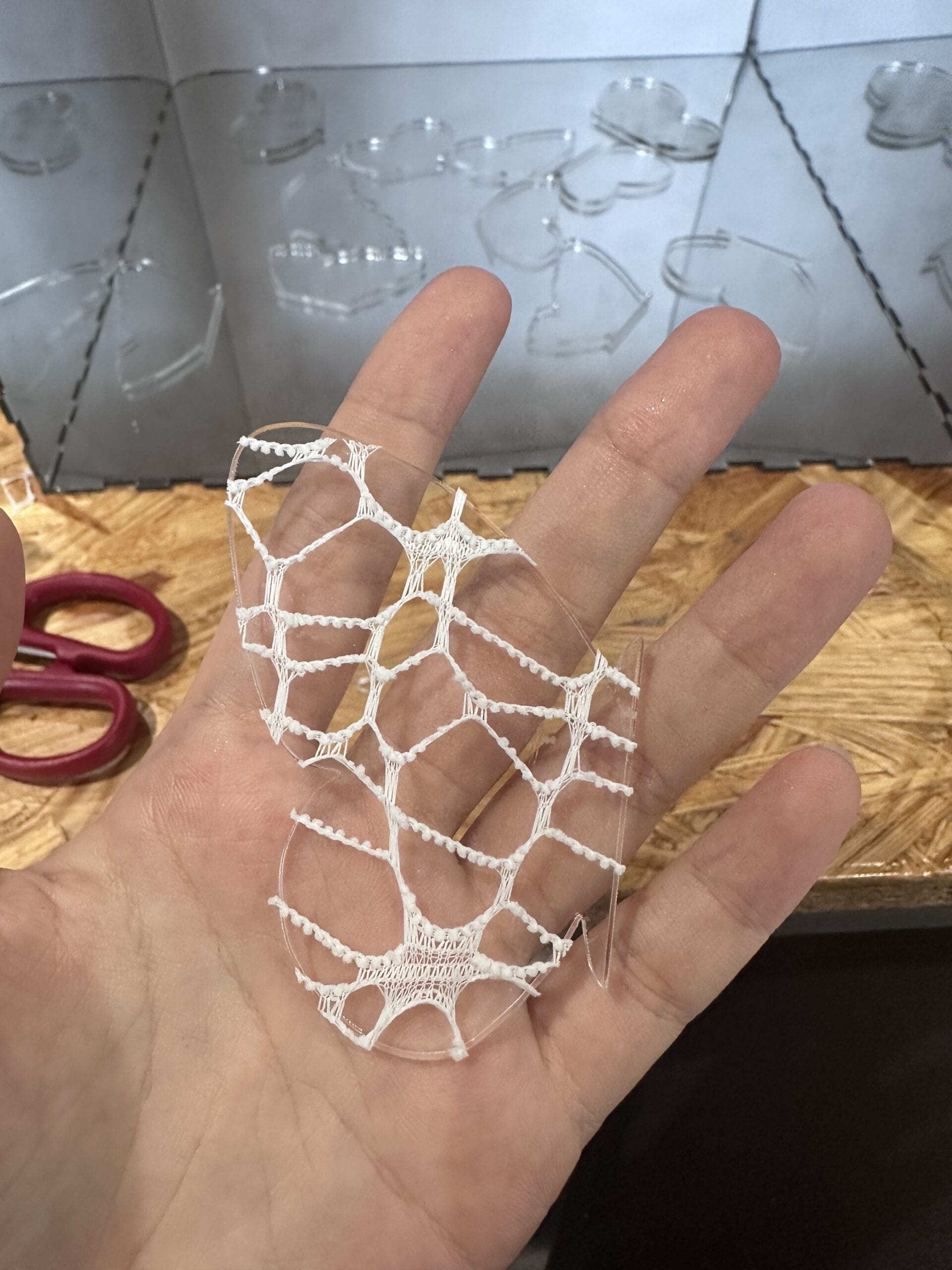
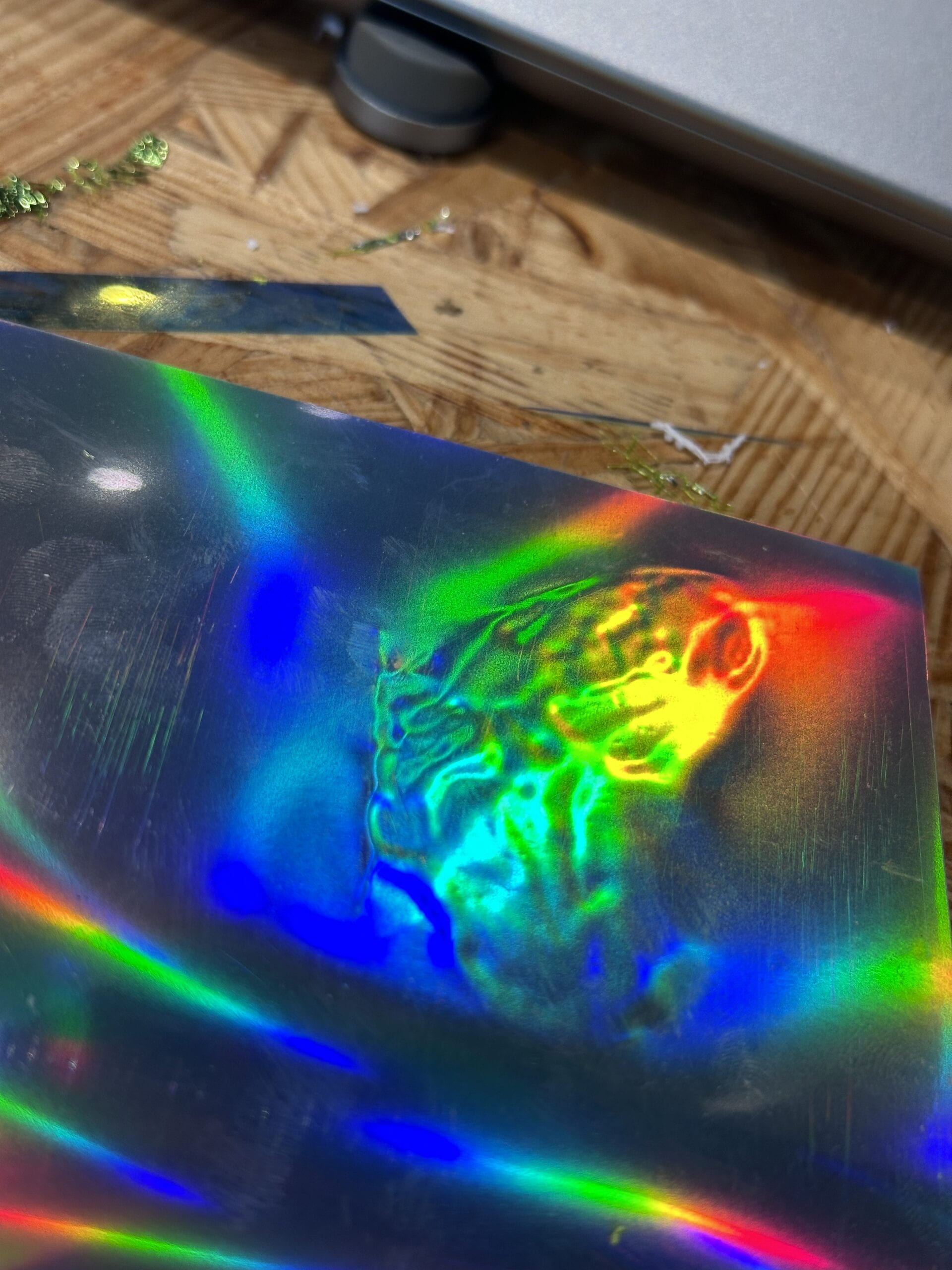
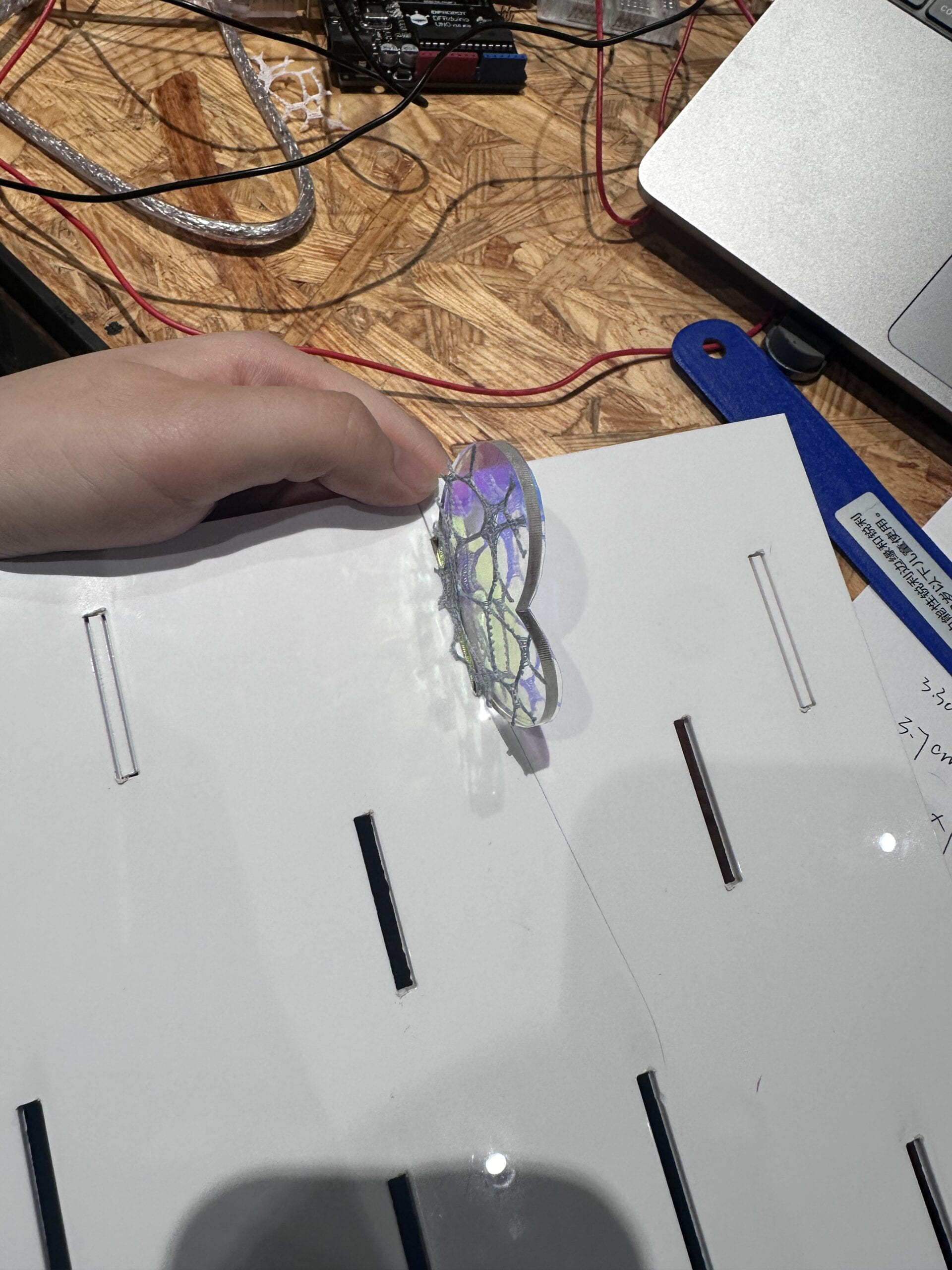
I laser cut butterflies on transparent acrylic boards. Then, I used acrylic glue to glue the preselected paper I bought with textures on the board and cut the materials out of the edge of the board. I experimented many times for superior effects. Usually, it will be different materials on the both sides of the board. One is for texture, and the other one is for color. To clamp the butterflies, I cut twelve slots.
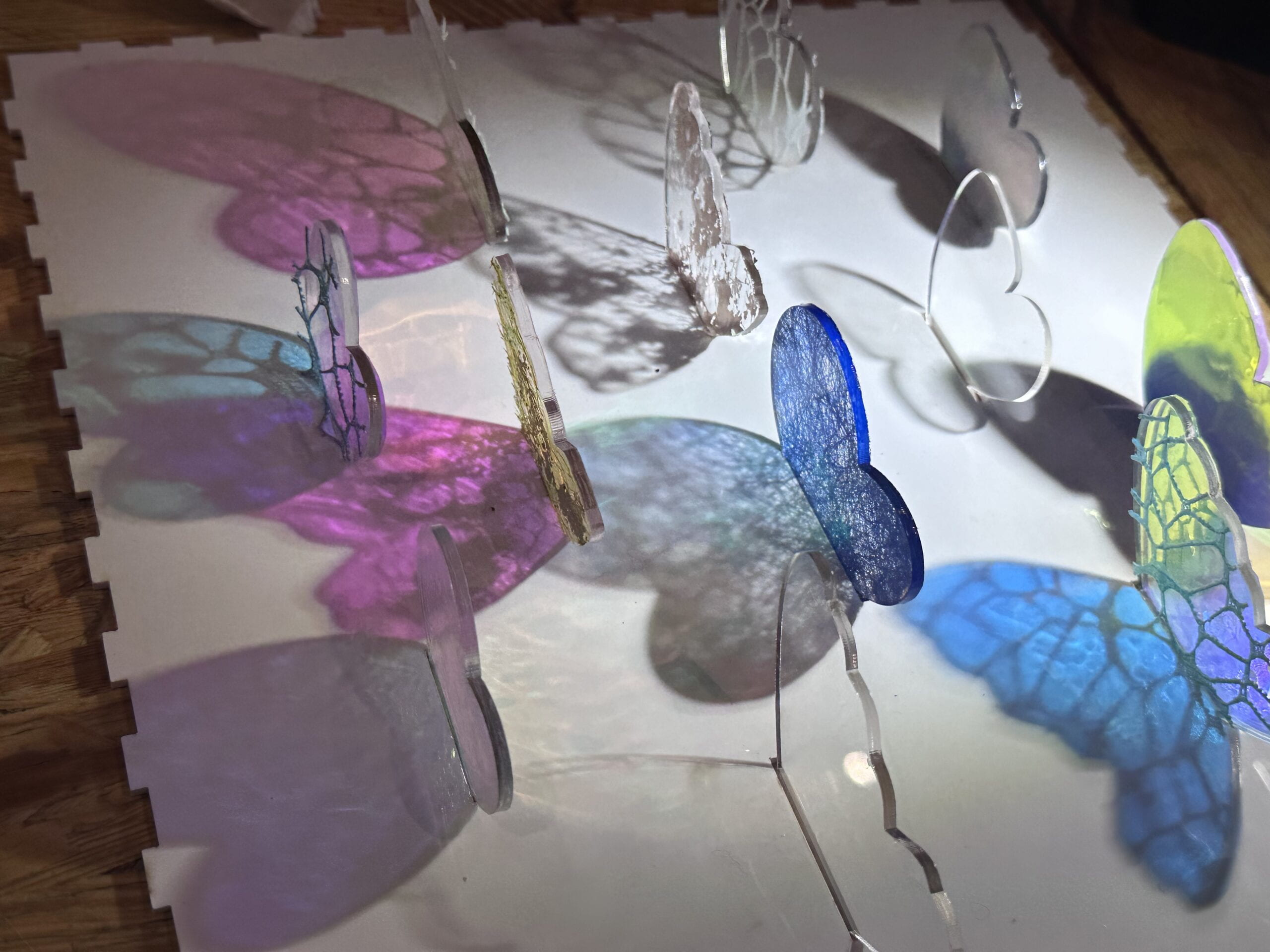
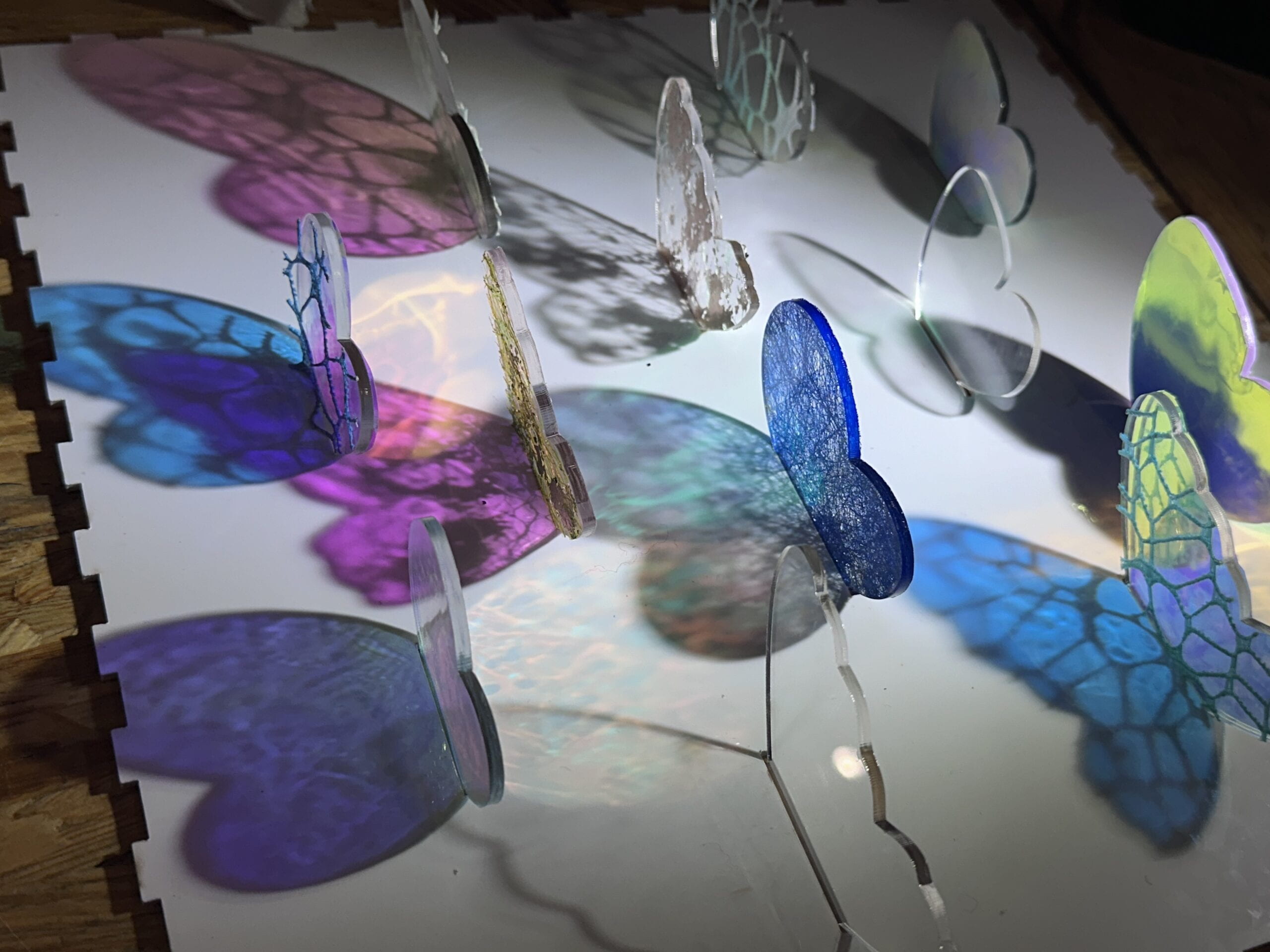
However, I found the effect using halogen lamps was even worse than phone flashlight. The yellow color of halogen lamps mixed and ruined the colors of light reflections of the materials. So I need brighter and whiter light. Then I found Eric to obtain the spotlights.
To make the color more distinct and focused, I glued a piece of white paper on the acrylic butterfly wall. The interesting thing I found is that when the spotlight was spot on the mirror, there would be better light reflection of the butterfly wings.
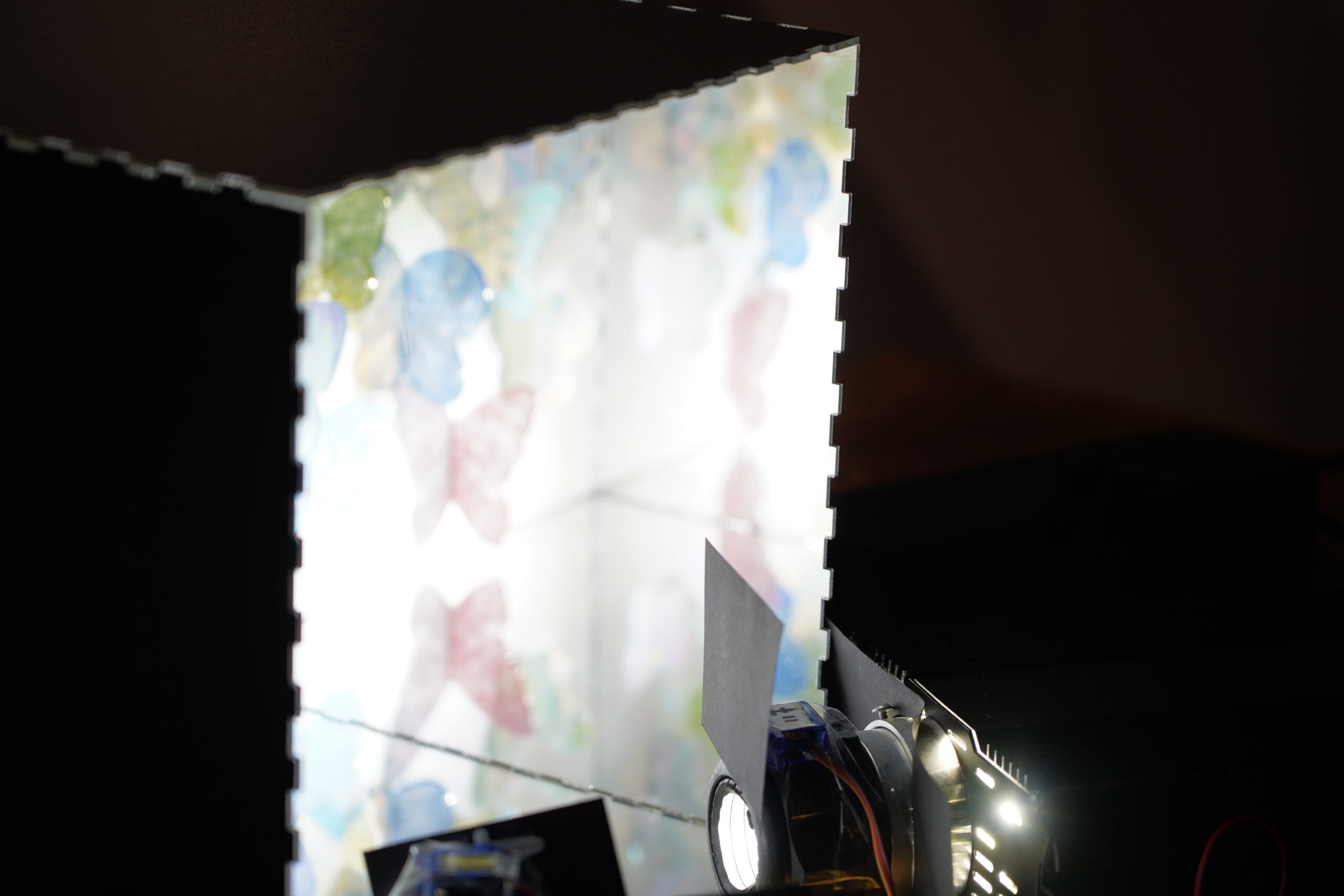
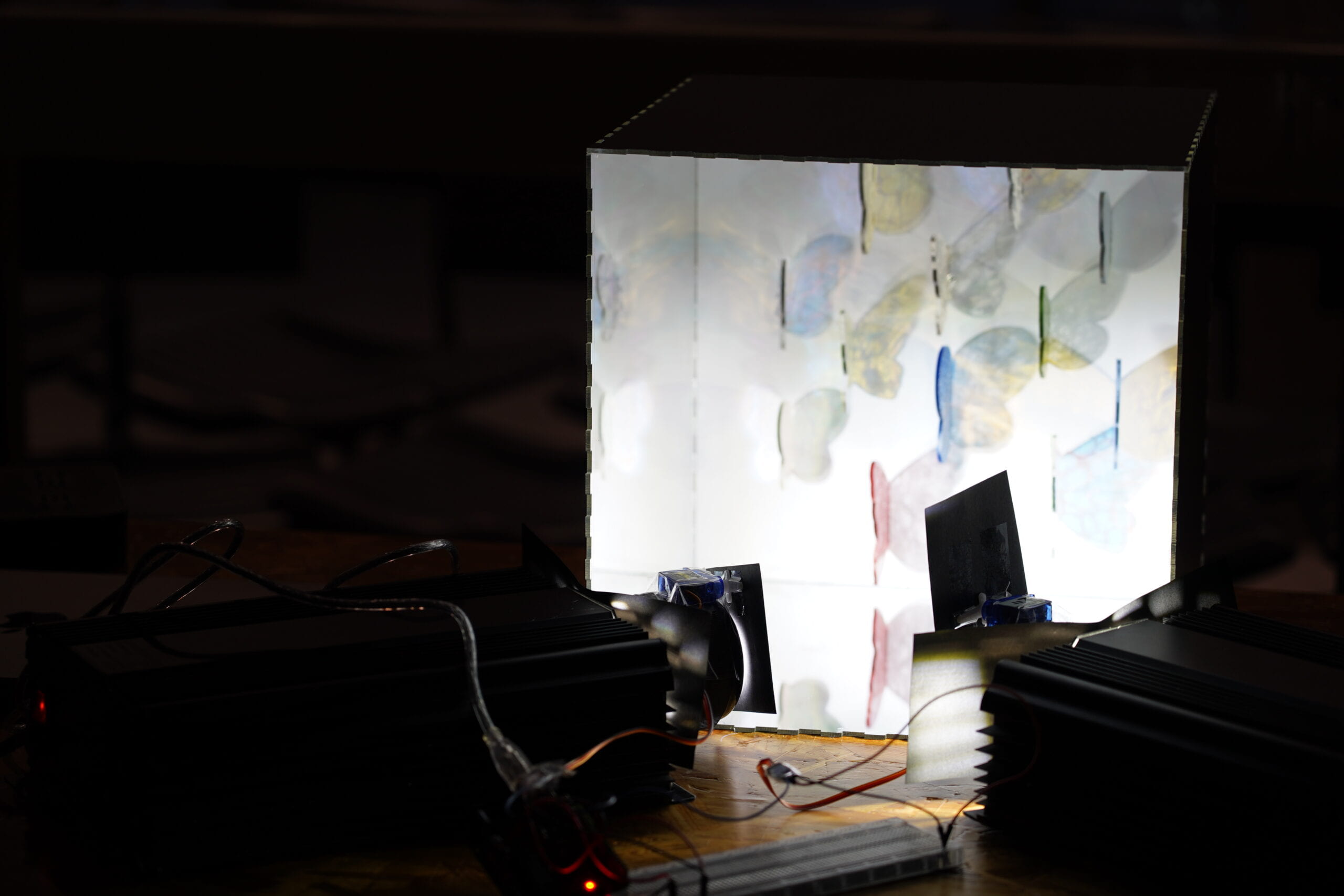
But eventually, it was hard to code with the spotlights directly. We tried to play with the position of spotlights and saw different amazing effects it made. However, the machine was too heavy and the box was too fragile. We had to use the servos with black paperboards on them to cover the light to mimic the effect of turning it on and off. For better user experience, users need to come as close as possible, even till they tuck their heads in the box.
E. Presentation
The presentation went very well. Everyone praised the beauty of this project. I was satisfied that audience showed their understanding of transcending space and light reflection in their feedback.
However, if the box can be bigger, then everyone can see it clearly and feel the transcending space better. Now, it is hard for people to tuck their head in my box because there are two servos right in front of the boxes.
Additionally, the sounds of two servos were super annoying for a calm space. They distracted people’s attention a lot.
(Here are two documentation videos)
F. Improvement
If condition permits, I will make a mirror room, like “YAYOI KUSAMA: INFINITY MIRROR ROOMS“, or make it big enough to put a hole in it so that people can tuck their heads. In a word, BIGGER!!! Also, because of the thickness of mirror acrylic boards, we can see the edge of every wall clearly. If I chose the real mirror, the whole space will not be segmented.
Moreover, I felt a little bit pity that I didn’t have the chance to code for the automatic light change. Using servos with black paperboards was still like manually turning the light on and off. If there were brighter and whiter light bulb that I could use, I could use code to fade them. Also, I believed fading will make the butterflies flutter more smoothly and remove the annoying noise of servos.
G. Conclusion
About my research and proposal, I was once overwhelmed that I felt I got trapped in conventional art form and hardly had any inspirations to jump out of the routine. I started to create my project with a little bit self-negation and repulsion. However, during the creation, I got amazed that even when I was making something that had been done many times before, a little new try can make a big surprise. I was surprised by the experiment on the composition of light reflection and shadow of different materials once and once again. The composition of color and textures made some butterfly wings look like real butterflies. After the butterfly wall was put in the mirror box, I was shocked by the infinite effects. At last, I also had a lot of fun changing the position of the spotlights to see the different effects. Experiment and process brought the most joy to me in this project.
H. Reference
Clark, R. (2011). Phenomenal: California Light, Space, Surface.
Schuld, D. (2011). Practically Nothing: Light, Space, and the Pragmatics of Phenomenology.